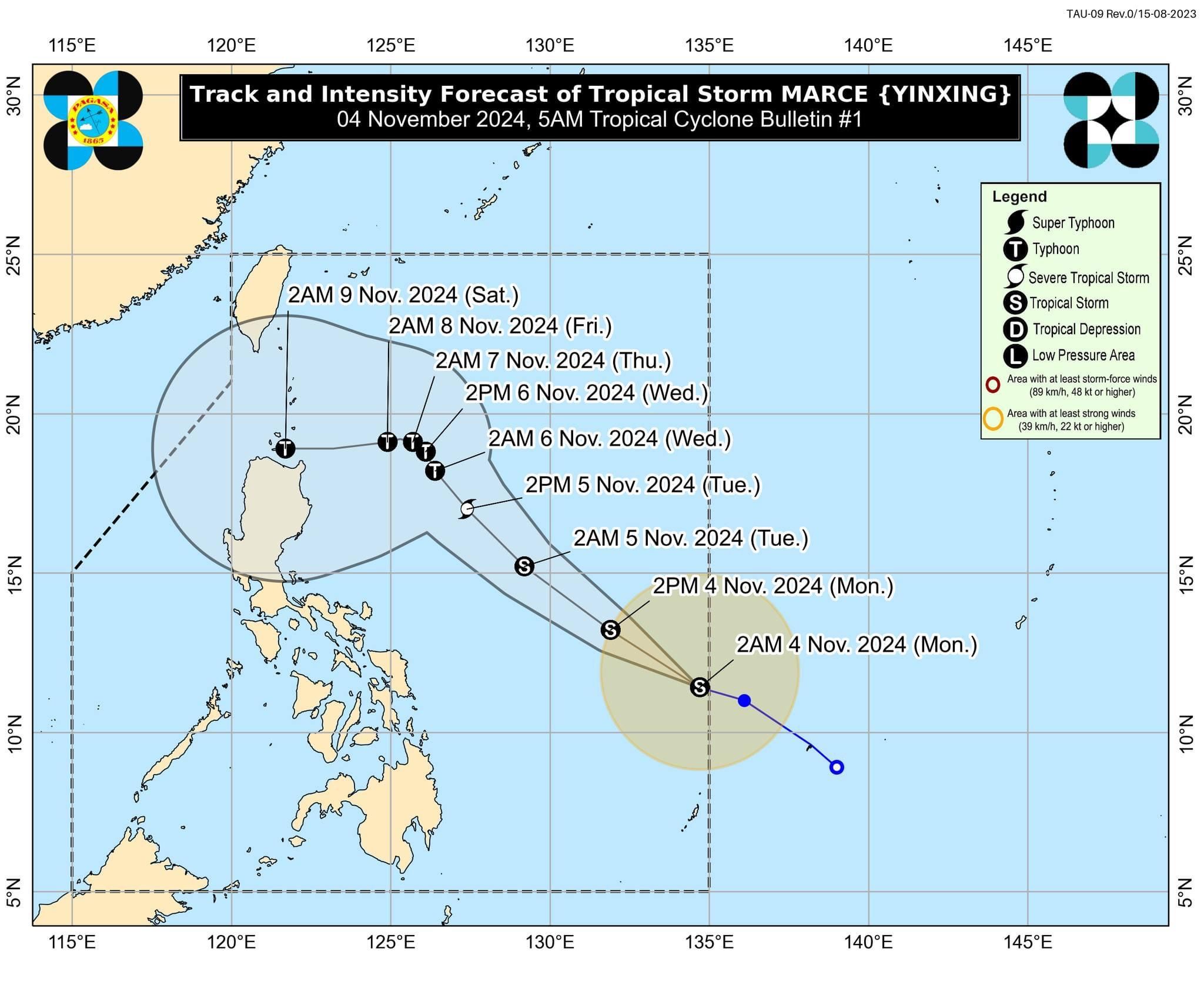At A Glance
- PAGASA said there is a "high uncertainty" regarding Marce's forecast track due to two possible scenarios—the storm may either shift westward towards extreme Northern Luzon or mainland Luzon, or it may move erratically over the Philippine Sea, east of extreme Northern Luzon.
- A westward shift in track is likely within the next 24 hours due to a high-pressure area north of Marce, which may change the potential landfall area—from Babuyan Islands to Isabela.
- The highest wind warning that may be issued in the coming days is Signal No. 4, should the storm intensify into a typhoon.

The Philippine Atmospheric, Geophysical and Astronomical Services Administration (PAGASA) said the tropical depression off Eastern Visayas intensified into a tropical storm upon entering the Philippine area of responsibility (PAR) on Monday morning, Nov. 4. It has been named “Marce,” making it the 13th tropical cyclone of 2024.
As of 4 a.m., the center of Marce (international name: Yinxing) was located 935 kilometers east of Eastern Visayas, with maximum sustained winds of 65 kilometers per hour (kph) and gusts reaching 80 kph.
The storm is moving west-northwestward at a speed of 25 kph.
PAGASA said Wind Signal No. 1 could be raised over parts of Cagayan by Tuesday, Nov. 5. The highest wind warning that may be issued in the coming days is Signal No. 4, should the storm intensify into a typhoon.
“As Marce moves northwestward within the PAR region, it may enhance the surge of northeasterly wind flow, which may occur within the week. This, and the trough of the tropical cyclone, will bring rains over extreme Northern Luzon and the eastern section of Luzon beginning Tuesday,” PAGASA said in its bulletin.
Forecast track
PAGASA said Marce is expected to move west-northwestward to northwestward until Wednesday morning, Nov. 6, before significantly slowing down and turning westward.
From Wednesday afternoon onward, the storm will likely move north-northwestward to westward at a slow pace over the Philippine Sea, east of extreme Northern Luzon.
PAGASA pointed out that there is a “high uncertainty” regarding this forecast due to two possible scenarios—the storm may either shift westward towards extreme Northern Luzon or mainland Luzon, or it may move erratically over the Philippine Sea, east of extreme Northern Luzon.
It added that a westward shift in track is likely within the next 24 hours due to a high-pressure area north of Marce, which may change the potential landfall area—from Babuyan Islands to Isabela.